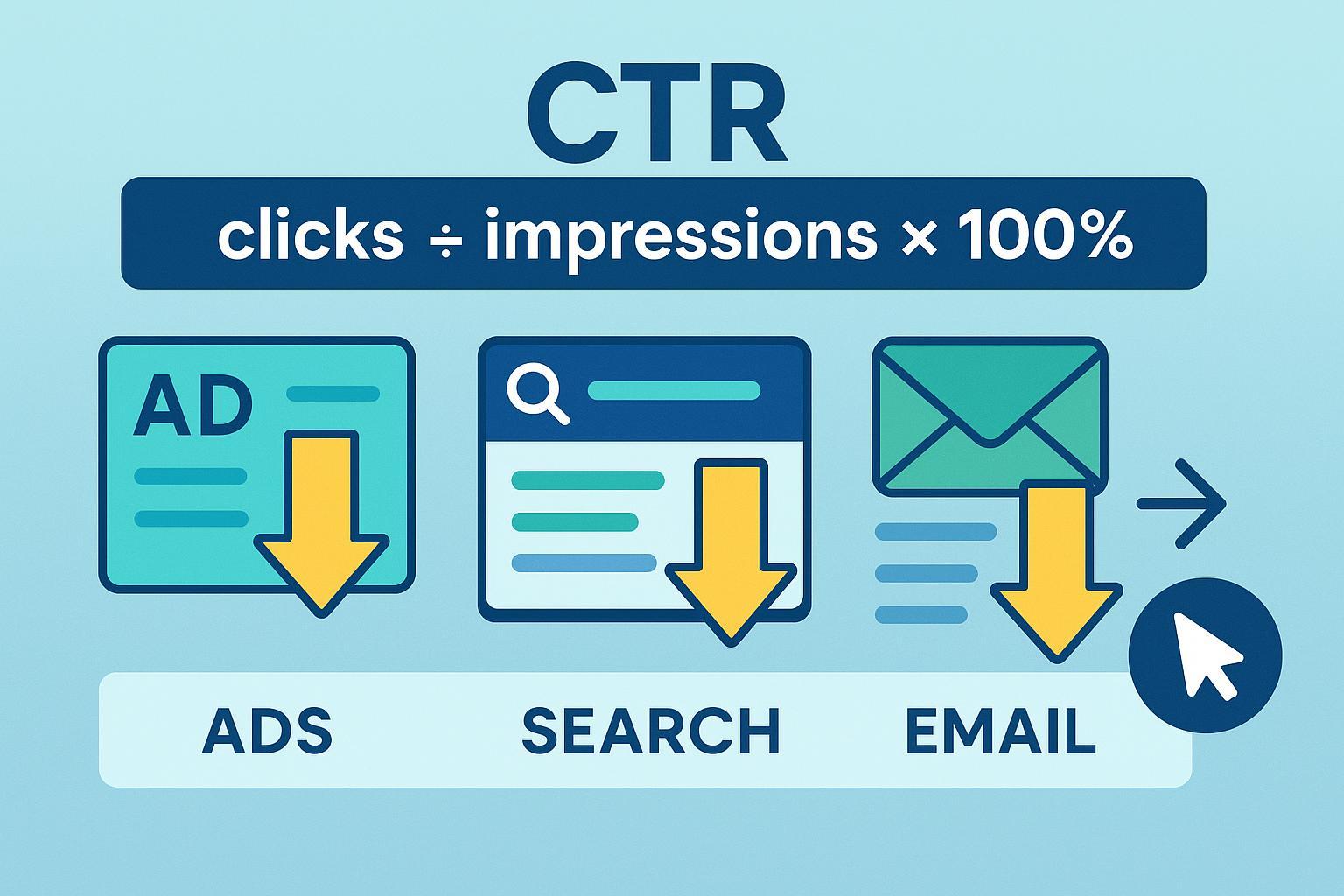What is Click-Through Rate (CTR)? Definition & Marketing Benchmarks
Learn what Click-Through Rate (CTR) means in digital marketing—formula, benchmarks, applications, and related terms for effective campaigns.


Click-Through Rate (CTR) is the percentage of users who click on a specific link or advertisement compared to the total number of people who see it (impressions), serving as a core metric for measuring engagement in digital marketing, advertising, and search optimization [Wikipedia].
In-Depth Explanation
CTR quantifies how effective a digital asset—whether an ad, search result, or email—is at compelling viewers to take action. It is calculated as:
CTR = (Number of Clicks ÷ Number of Impressions) × 100
For example, if an ad is shown 5,000 times (impressions) and gets 150 clicks, CTR = (150 ÷ 5,000) × 100 = 3%.
CTR is vital as it directly reflects relevance and appeal: a higher CTR means your messaging resonates with your audience. It informs decisions on ad copy, creative, targeting, and overall digital strategy. In platforms like Google Ads, high CTR can improve Quality Score, impacting cost and visibility [Investopedia].
Key Components
- Impressions: The total number of times your asset (ad, link, email) is displayed.
- Clicks: The number of times users interact (click) with the presented asset.
- Call-to-Action (CTA): The element designed to drive user clicks.
- Placement & Relevance: Where and how content appears affects click probability.
Channel Benchmarks
CTR varies significantly by channel. Here is a quick guide:
| Channel | Average CTR (%) |
|---|---|
| Google Search Ads | 3.17 |
| Google Display Ads | 0.46 |
| Email Marketing | 2.00 |
| Facebook Ads | 0.90 |
| Instagram Ads | 0.70 |
Source: CXL, SEMrush (2023). Benchmarks vary by industry and should be used for reference only.
Real-World Applications
- Search Advertising: High CTRs signal strong keyword/ad match. For instance, a campaign with a 4.2% CTR typically generates more traffic and conversions than one at 0.6%.
- Email Marketing: Optimized subject lines and targeted content regularly double average CTRs.
- Display & Social Ads: Used to assess creative effectiveness and refine targeting.
- AI-Driven Search & Automation: Tools now track and optimize for CTR, while innovations like Google's AI Overviews (SGE) are shifting attention—driving more zero-click searches and changing how marketers interpret CTR.
Related Concepts
- Impression: Each time your content is shown, counting toward the denominator of CTR.
- Conversion Rate (CVR): The percentage of clicks that result in a desired action (sale, signup).
- Bounce Rate: The rate at which visitors leave a page without further interaction—often considered alongside CTR for engagement insight.
- Cost-Per-Click (CPC): The average cost incurred for each click gained.
- Open Rate (Emails): Measures opens vs. emails sent—not to be confused with post-open engagement (CTR).
Summary: CTR remains essential for evaluating and optimizing digital marketing performance, guiding budget allocation and creative strategy, and adapting to evolving AI-driven marketing platforms. Regularly monitoring CTR across channels—and understanding its relationship with metrics like CVR and Bounce Rate—is key to digital marketing success.





